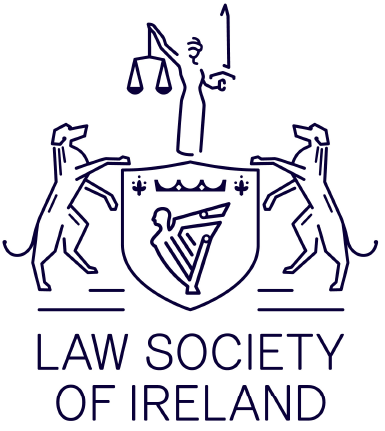As experts in personal injuries claims, we are constantly asked questions about how the personal injuries claims process works. Here’s just a few of the questions that we’re frequently asked by our clients and the general public:
WHAT IS A ‘PERSONAL INJURIES CLAIM’?
A general rule of Irish law is that we each owe a duty of care to those around us. If someone has breached that duty of care, either by an act or an omission, and this breach inflicts an injury on another person, the injured party may be in a position to bring a claim for compensation – this is known as a personal injuries claim.
WHAT IS PIAB?
PIAB stands for the Personal Injuries Assessment Board. It is an independent state body which was set up to assess compensation in personal injuries claims. Most personal injuries cases must begin with an application to PIAB whose role is to make an assessment of compensation. If PIAB makes an assessment of compensation and both sides agree with its assessment, the personal injuries claim ends there. If PIAB decides not to make an assessment or if either party does not agree to the assessment made, PIAB will issue authorisation to allow the claim to proceed through the courts.
WHAT ARE THE MOST COMMON TYPES OF PERSONAL INJURIES CLAIM?
A personal injuries claim can many types of injury sustained in many different ways. The most common however are as follows:
a) Road traffic accidents: these are claims that arise when a person is injured on our roads. It encompasses all types of road users – from pedestrians to truck drivers and can cause some of the most serious and long-lasting injuries.
b) Workplace accidents: Often referred to ‘employer liability claims’, accidents at work claims are those that have occurred in the workplace as a direct result of the negligence of an employer or fellow employees.
c) Public liability accidents: Public liability accidents are those that have taken place in a public place and are the result of the negligence or actions of the entity responsible for maintaining a safe environment for public use (usually a local authority or state body).
HOW DO I MAKE A PERSONAL INJURY CLAIM?
Whilst every claim is different, for the most part they will follow the following steps:
- Contact an experienced solicitor: The first step in bringing a personal injuries claim should be to contact an experienced team of personal injuries solicitors who will be able to provide practical and impartial advice.
- Obtain a medical report: Most personal injuries claims will require a medical report from either your GP or the Doctor who treated you after your accident. A medical report confirms that an injury has been sustained and that it is consistent with your accident.
- Submit an application to PIAB: Most personal injuries claims must first be submitted to the Personal Injuries Assessment Board (PIAB). The role of PIAB is to review the personal injuries application and to make an assessment of damages if it is of the view that it is competent to do so. If PIAB makes an assessment of damages and both sides agree with the assessment, the personal injuries claim ends there. If PIAB does not make an assessment of if either side does not agree with the assessment made, PIAB will issue the claimant with an authorisation to bring court proceedings.
- File court proceedings: If the matter could not be dealt with by PIAB, you may decide to file court proceedings against the person or entity who caused your injury. Your solicitor will guide you through this process.
ARE THERE ANY TIME LIMITS IN BRINGING A PERSONAL INJURIES CLAIM?
Yes. The first thing that those thinking of taking a personal injuries case should bear in mind is that such claims are subject to time limits. If an injured party does not bring a claim within these time limits, they can become ‘statute barred’ or prohibited from bringing a claim for compensation in court.
Generally speaking, a personal injury claim must be made within 2 years from the date of knowledge of their injury. However, like most things in law, it is not as straight forward as that. Although the ‘date of knowledge’ is usually be the date of the accident, this is not always the case. For example, an injury may not begin to manifest for some time after an accident. In such a case, the ‘date of knowledge’ is the date the injured person found out they were injured. The rule also protects those who, despite knowing that they are injured, are not aware that their injuries were caused by someone else’s negligence. Even if they become aware of this many years later, they are not statute barred from bringing a personal injuries claim because the ‘date of knowledge’ is the date they found out their injury was caused by someone else’s negligence.
There are 2 exceptions to the general time limits – one applies to those who are minors (under the age of 18) while the other applies to those who are of unsound mind. In the case of minors, the clock does not start ticking until they reach the age of 18. Children can therefore make a personal injury claim at any time up to their 20th birthday for accidents that occurred before they were 18. Until the child reaches the age of 18, a competent adult can take a claim on their behalf if they so wish. In the case of those who are of unsound mind, such as a mental disability, the clock does not start ticking until such time as they are no longer of unsound mind.
HOW ARE PERSONAL INJURY CLAIMS CALCULATED?
It is difficult to assess how much an individual claim is worth. Amounts can vary greatly depending on the type of injury, the severity of the injury, the recovery period and any financial loss incurred as a result. Having said that, one can look to the Book of Quantum to estimate the value of any claim. The Book of Quantum, created by the Injuries Board, provides us with a general guideline on how much may be awarded in a claim. The book assesses certain injuries in terms of severity and how long it may take to recover. Important to note is that this book does not determine the exact value of a case, actual circumstances and expenses incurred may lead one to a different outcome.
HOW DO I SETTLE A PERSONAL INJURIES CLAIM?
For one reason or another the vast majority of personal injuries claims are settled. Whilst there is no specific rule or way to settle a personal injuries claim, since the person or entity you are taking the claim against will need to make a settlement offer, your solicitor can indicate to the other side that you are willing to enter into settlement talks. Your solicitor will be able to advise you on the best strategy to take in this regard and conduct any settlement negotiations on your behalf.
WHAT IS A GOOD SETTLEMENT?
This will depend entirely on the type of injury you sustained, the severity of your injury, your recovery period and your future employment and health prospects, and any financial loss you incurred as a result of your injury. Having said that, the Book of Quantum, which was created by PIAB, provides a general guideline on how much a claim is worth.
WHAT HAPPENS IF YOU DON’T ACCEPT A SETTLEMENT?
You are under absolutely no obligation to accept a settlement offer. Parties to a personal injuries claim can enter into settlement talks at any stage throughout the personal injuries claim process. However, if an agreement is not reached, the case generally proceeds as as it would until such time that a decision is made by the Court and the claim naturally comes to an end.
HOW LONG DOES IT TAKE TO RECEIVE AN OFFER OF COMPENSATION?
There are three ways that an offer or decision on compensation can be reached.
a) PIAB – The role of the Personal Injuries Assessment Board is to make an assessment of compensation. If PIAB makes an assessment of compensation and both sides agree with its assessment, the personal injuries claim ends there. On average, claims made to the PIAB are assessed within 7 months from the date that the respondent consents to have the claim assessed by the PIAB.
b) Settlement – the parties to a personal injuries claim can enter into settlement talks at any stage during the personal injuries claims process if they so wish. A settlement can therefore be reached at any point during the process – whether it’s on the day of the accident or on the steps of court on the day of the hearing.
c) Court – If a personal injuries claim was neither concluded in PIAB nor settled, it will be for a judge to decide the outcome of a particular case and if they decide to award damages, the extent of those damages. One should allow at least 18 months from the initial court application to a decision; however, some personal injury claims can take up to 48 months and longer.
WHY IS MY PERSONAL INJURY CASE TAKING SO LONG?
Those contemplating taking a personal injuries claim should be prepared for it to go for many years. Although it is impossible to gauge how long an individual personal injuries claim will take from start to finish, we can outline approximate time-scales for the following stages:
d) Medical Report – most personal injuries claims start with at least one medical report. Depending on the type of medical report and expertise involved, this step could take anywhere from a number of days to a number of months.
e) PIAB – most personal injuries claims involve an application to the Personal Injuries Assessment Board (PIAB). On average, claims made to the PIAB are assessed within 7 months from the date that the respondent consents to have the claim assessed by the PIAB.
f) Court Proceedings – If the matter does not settle or is not assessed by the PIAB, the next stage is to issue court proceedings. The time it takes varies but one should expect it to take at 18 months from start to finish. Some personal injury claims can take up to 48 months and longer.
WHAT ARE THE FEES ASSOCIATED WITH TAKING A PERSONAL INJURIES CASE?
The person taking the personal injuries claim will always be responsible for discharging their own legal fees – and, if their claim is unsuccessful, may even be responsible for the legal fees of the other side.
When it comes to personal injuries claims, the majority of solicitors work on a ‘no win, no fee’ basis. This means that the solicitor will not charge a professional fee if the case is unsuccessful. The person taking the personal injuries case may still be responsible for any expenses or outlay the solicitor incurred throughout the case. In this regard, some solicitors may require money upfront so that they may pay for any outlays and expenses that arise during the case. An example of this might be a medical report, which can cost anywhere between €300-€850.
Notwithstanding this, the Irish legal system works on the general principle that ‘costs follow the event’. This means that the winning side will, in most instances, have their costs, expenses and outlays paid for by the losing side. This means that if the person taking the personal injuries case wins, most of their legal fees and outlays may be paid for by the other side.








